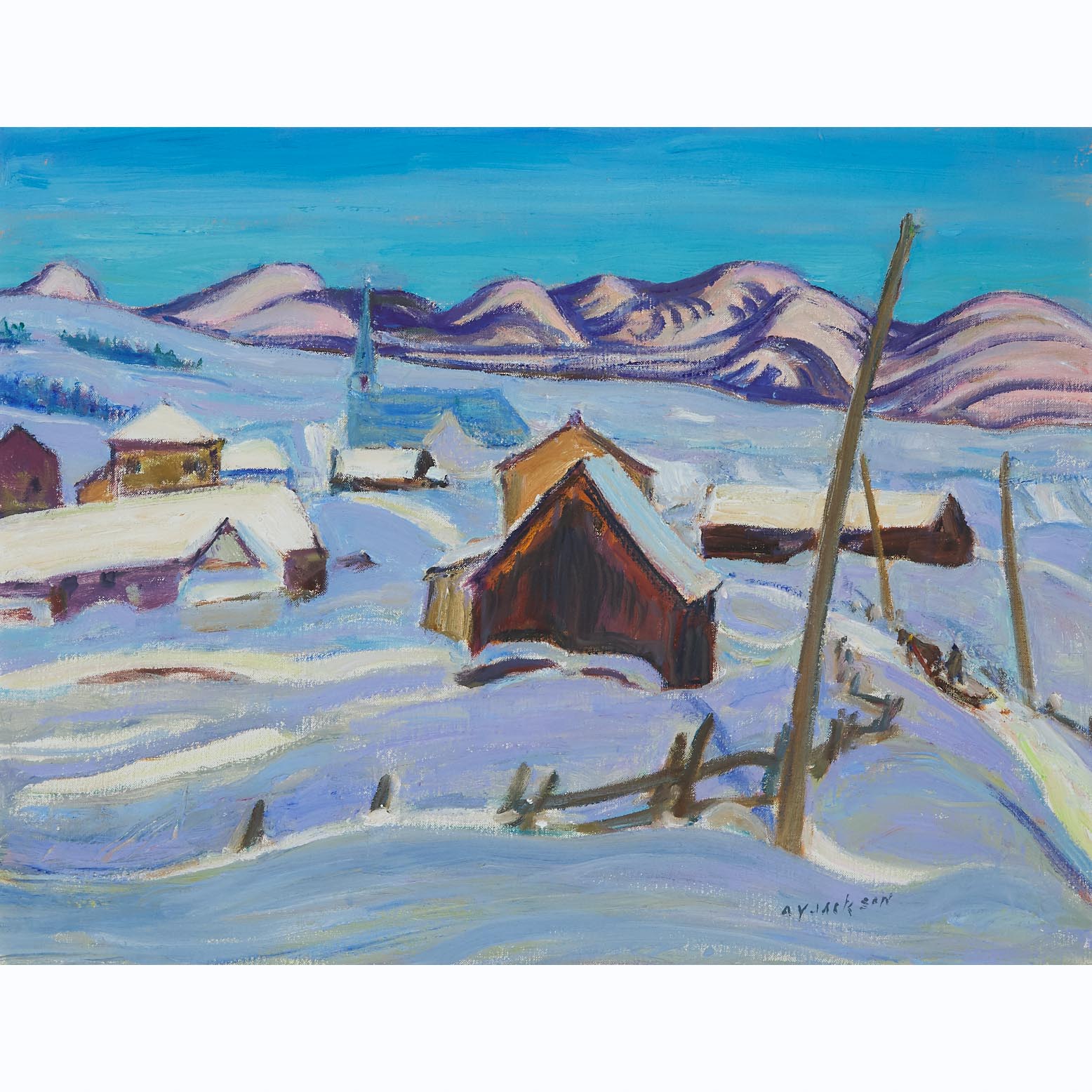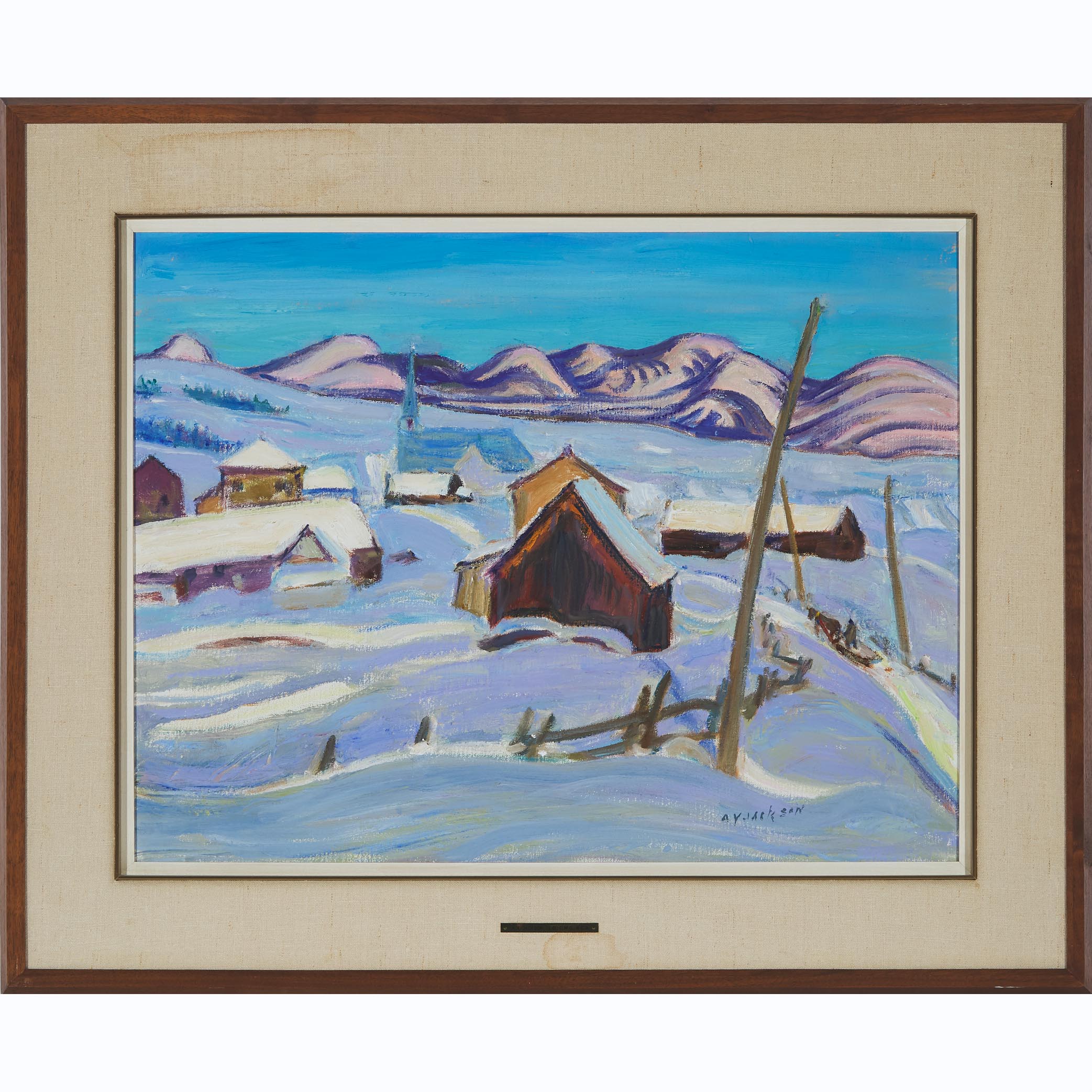Lot 33
ALEXANDER YOUNG JACKSON, O.S.A., R.C.A. (1882-1974)

Additional Images

Provenance:
Walter Klinkhoff Gallery, Montreal, QC;
The Art Emporium, Vancouver, BC;
Private collection, Vancouver, BC
Note:
Of all of the Group of Seven’s members, A.Y. Jackson’s vision for his art remained the steadiest. His works are most stirring – as in St. Urbain, Quebec – when he pays attention to the effect of strong light on the landscape without showing the sun. The light in St. Urbain, Quebec is brighter, almost as raw as paint fresh from the tube. In the early 1920s, when Jackson began his spring sketching trips in Quebec’s Charlevoix region, about 100 kilometres down the St. Lawrence River from Quebec City, he was an accomplished painter who had to acquire fluency with the terrain, its light, and the interplay of both from day-to-day and year-to-year. Around 1932, with the Group on the brink of dissolution and reemergence as the Canadian Group of Painters, the paintings hit a high aesthetic plateau with works such as the Art Gallery of Ontario’s Winter, Charlevoix County (1933) and the McMichael Canadian Art Collection’s Road to Baie St. Paul(1933).
As his physical capacity and stamina changed, his attention to the relationships of colour became bolder. He had used white, blues, rose madder and cadmium yellow for decades in these compositions. They were as true to him as any living friend, and where he once exploited the effects of painted grounds to modulate the light within the picture, here he renders a composition he has rendered in variation dozens of times earlier like a virtuoso musician renders a passage of music they have played for decades. In this painting, with his years of experience, Jackson applied the paint with a bold economy. Enigmatically, and powerfully, the ochre and ultramarine face of the barn, closest and nearly parallel to the picture plane, is a brash compositional choice that reminds how at his best Jackson never ceased thinking about the translation of the landscape through light and paint. Of importance to prospective bidders, Jackson’s 1933 comments to the Art Gallery of Toronto (now, Art Gallery of Ontario) when it purchased Winter, Charlevoix County specifically states the painting should not be varnished, and the unvarnished state of St. Urbain, Quebec shows the wisdom of his position.





